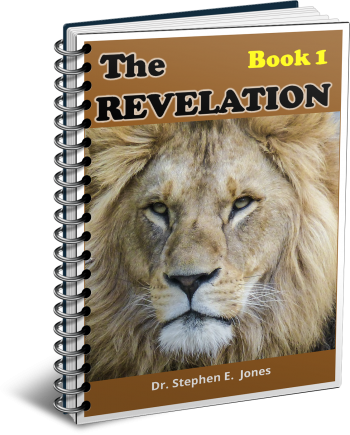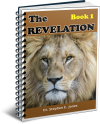Latest Posts
View the latest posts in an easy-to-read list format, with filtering options.

A study of Revelation 1-2, ending in Revelation 2:17. This is book 1 of an 8 part book series.
Category - Bible Commentaries

The book of Revelation is a Hebrew book expressed by the Greek language.
This alone binds this book tightly to the book of Daniel. The imagery and symbolism is derived from the Hebrew Scriptures. Dr. Bullinger points out that there are seven sections in the main body of the book of Revelation which alternate between scenes in heaven and scenes occurring on earth.
A. Introduction (ch. 1)
B. The People on the earth (2, 3)
C1. In Heaven (4, 5)
D1. On Earth (6:1-7:8)
C2. In Heaven (7:9-8:6)
D2. On Earth (8:7-11:14)
C3. In Heaven (11:15-19)
D3. On Earth (11:19)
C4. In Heaven (12:1-12)
D4. On Earth (12:13-13:18)
C5. In Heaven (14:1-5)
D5. On Earth (14:6-20)
C6. In Heaven (15:1-8)
D6. On Earth (16:1-18:24)
C7. In Heaven (19:1-16)
D7. On Earth (19:17-20:15)
B1. The People on the New Earth (21:1-22:5)
A1. Conclusion (22:6-21)
These seven main sections point us to the seventh letter of the Hebrew alphabet, the zayin, which means “a weapon.” Its root word means “to cut.” In this case, we see divine court decrees and angelic enforcement being used as spiritual weapons to bring about the desired goal of heaven. That goal is to “put all enemies under His feet” (1 Corinthians 15:25) and “to subdue all things unto Himself” (Philippians 3:21 KJV).
This heaven-and-earth structure of the book of Revelation was not designed to distinguish heaven from the earth but to link them together in a cause-and-effect relationship. The goal is unity, not the destruction of the earth, nor is the goal even the subjugation of the earth as a slave-wife. This divine purpose reaches a crescendo in Rev. 21:2, where we see the New Jerusalem coming down from heaven to the new earth that has been prepared in the previous chapters. It is pictured in marriage terms (“a bride adorned for her husband”). Unity and agreement is thus achieved between heaven and earth.
This has been the goal of history since the beginning. The goal was not for Christ to have a slave-wife (“Hagar” in Gal. 4:22-25), but to be married to a freewoman who can be a co-heir and co-ruler with Christ. Only a freewoman can fit the description given in Gen. 2:18 of “a helper suitable for him.” In fact, the description of the “bride” in Rev. 21:2 defines what God meant in Gen. 2:18, when God cohabits with us on a collective picture and in us on a personal level. One might say that history itself is the time it takes for this “bride” to prepare herself to become “suitable for Him.” This is accomplished through an interaction between heaven and earth. It also presents a picture of the sovereign decrees of God in heaven which bring about the desired changes on the earth.
This is the global purpose and progression of history that the basic structure of Revelation was meant to set forth. And not only John, but Daniel too is included in this purpose—along with the entire Word of God from the beginning.
Therefore, the book of Revelation was not intended to show the ultimate destruction of the earth, but rather its renewal in the same manner that God is renewing our minds on an individual level. The destruction of our “old man” is accomplished by the salvation of the “new man.” When the Holy Spirit begets Christ in us, and then brings that Holy Seed to full birth, that which is at enmity with God passes away, but that which is in agreement with God inherits all things with Christ.
So also is it on the collective level of humanity as a whole. The first heaven and the first earth passes away, not by destruction, but by being replaced with the perfect New World Order. Heaven wins the heart of the Bride, and so the great marriage takes place.
Each of the 22 chapters contains a revelation about a Hebrew letter in consecutive order and provides an outline for the book itself.
In fact, this links the book of Revelation to Psalm 119, which is divided into 22 sections. All eight verses of each section begin with the same letter of the Hebrew alphabet. This psalm was meant to represent the revelation of the Word, which is made up of these 22 letters. The 22 letters, then, were seen as an expression of the full revelation of the Word of God. In fact, it set forth the truth from Deut. 8:3, which Jesus used against the devil in Matt. 4:4,
4 But He answered and said, “It is written, Man shall not live on bread alone, but on every word that proceeds out of the mouth of God.”
Hence, the book of Revelation was designed to present the full scope of truth proceeding out of the mouth of God. The fact that it was written in Greek does not mean that it should be read through Greek spectacles. If John had intended to present Greek thought patterns, he ought to have written 26 chapters, one for each letter of the Greek alphabet. Instead, he wrote 22 distinct sections, which are easily divided into the 22 chapters that come to us in the present form of the book.
John says in Rev. 1:3, “Blessed is he who reads and those who hear the words of the prophecy.” Words are made up of letters. In verse 1 he says that these words were “signified” by His angel. The Greek word is semaino, which means “to give a sign.” The word is derived from sema, “a mark.”
Although this is expressed in Greek, the thought behind it is Hebrew. The final letter of the Hebrew alphabet is tav, which means “a mark or sign.” In Ezekiel 9:4 the “man clothed in linen” was told to “put a mark [tav] on the foreheads of the men who sigh and groan over all the abominations which are being committed.” This was more than just a sign. It was the signature of God, originally written as an X or as a cross on their foreheads.
So from the beginning of the book, John subtly reveals the ultimate purpose to lay claim to the whole earth as its Owner and also to protect it. As Creator, God owns the earth and is responsible for it. Since the tav is the last letter of the Hebrew alphabet, we see that God signs His name at the end of the 22nd chapter. Rev. 22:4 says that “His name shall be on their foreheads.” His name is Jesus, “Salvation” (Rev. 22:21), who signed His name on our foreheads with His mark—the cross.
Here is a list of the Hebrew letters, along with their meanings:
Alef (?) bull, first, primary, beginning (Rev. 1)
Beth (?) house, household (Rev. 2)
Gimel (?) camel, pride, lifting up (Rev. 3)
Dalet (?) door (Rev. 4)
Heh (?) breath, spirit (Rev. 5)
Vav (?) nail, peg, connection (Rev. 6)
Zayin (?) weapon, cut (Rev. 7)
Cheth (?) fence, inner room (Rev. 8)
Teth (?) snake, to encircle (Rev. 9)
Yood (?) closed hand, work, deed (Rev. 10)
Caph (?) open hand, palm (Rev. 11)
Lamed (?) ox goad, authority (Rev. 12)
Mem (?) water, chaos (Rev. 13)
Nun (?) fish, swarm, teaming with life (Rev. 14)
Samech (?) prop, support (Rev. 15)
Ayin (?) eye, see, manifest (Rev. 16)
Peh (?) mouth, word (Rev. 17)
Tzaddi (?) hook, desire (Rev. 18)
Koph (?) back of head, what follows (Rev. 19)
Resh (?) head, leader (Rev. 20)
Shin (?) teeth, devour, consume (Rev. 21)
Tav (?) mark, sign (Rev. 22)
These will be explained further as we study each chapter in the book of Revelation. As we will see, each chapter has something to do with each Hebrew letter.